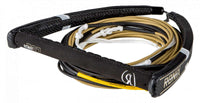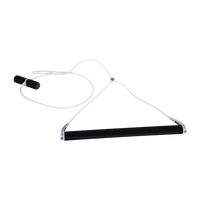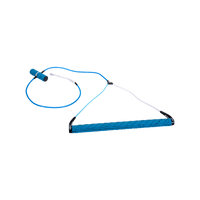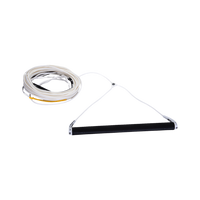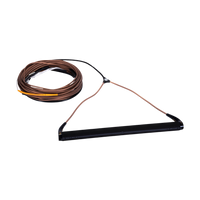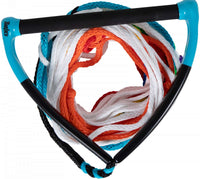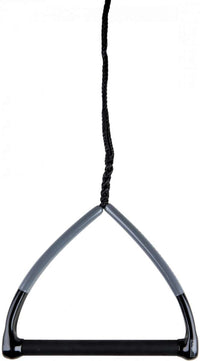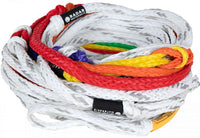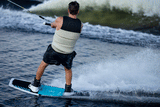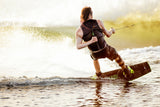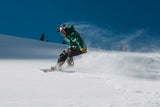Wakeboarding Towing Speed, Rope Length, and Boat Weight Distribution
Proper setup for wakeboarding includes rope length, tow speed, and boat weight distribution.
- Using the correct wakeboard rope length helps in learning new tricks and maximizing the wake created by your boat.
- The right tow speed is crucial for learning and progressing safely in wakeboarding.
- Weighting your boat with ballast bags creates more displacement, resulting in a bigger wake.
Wakeboard Rope
The proper wakeboard rope length is typically between 65' and 85', depending on the rider's ability, speed, and the size of the wake. Beginners usually start with a rope length of about 65 feet, intermediate riders use 65-75 feet, and advanced riders typically use 75-85 feet. Using the rope length to adjust your landing spot can help you land on the gentle downside of the wake consistently. Adjusting the rope length can also be used to "cheat" on new tricks, such as letting the rope out if you're landing in the flats or pulling it in if you're coming up short. A good, non-stretch rope is essential for wakeboarding to prevent imbalance during jumps.
Shop our collection of Ropes & Handles
Tow Speed
The proper speed to tow a wakeboarder is usually between 15 and 25 mph, depending on factors like ability level and boat. For true first-timers, a very slow speed (around 12-15 mph) is advised to help them get comfortable with their edges and turning. Once the rider is comfortable, gradually increase the speed to about 18-19 mph, listening to their feedback and adjusting accordingly. As the rider progresses and starts jumping, speeds of 21-23 mph are suitable.Faster speeds (above 21 mph) create cleaner and firmer wakes, making it easier for riders to jump or learn new tricks.
Slower speeds (below 21 mph) result in mushy wakes that can swallow the rider's board rather than act as a ramp for jumping.
Advanced riders may exceed 23 mph but typically do not go beyond 25 mph. It's important to work with the rider to find the optimal speed for their skill level and your specific boat, as speed perception can vary between boats.
